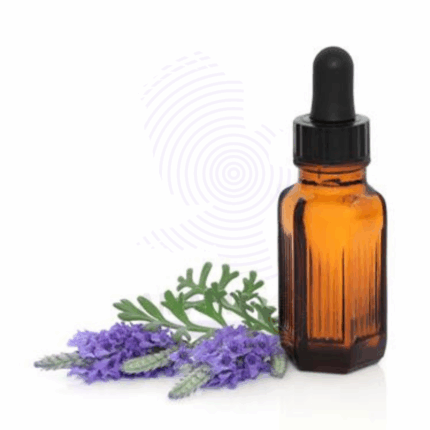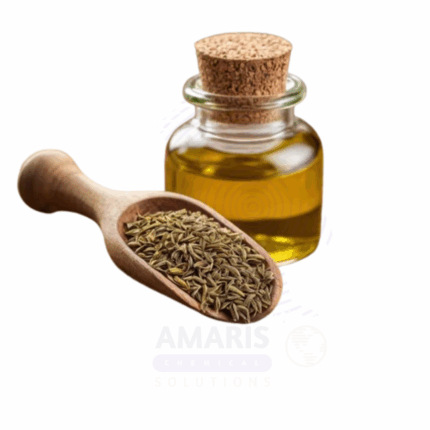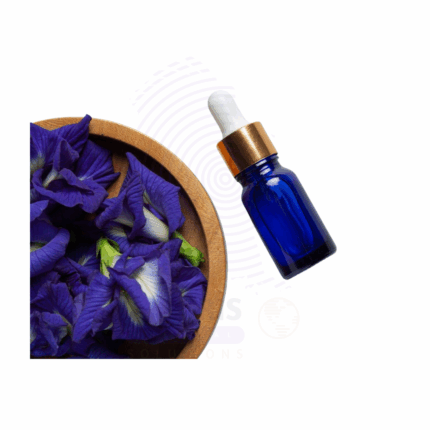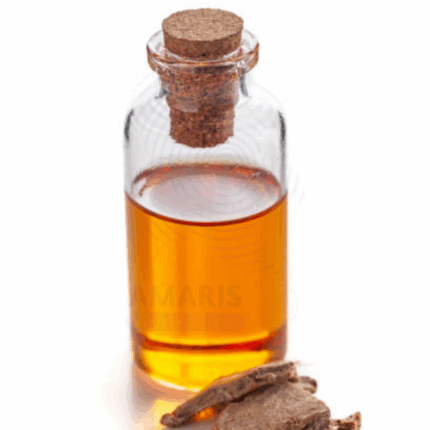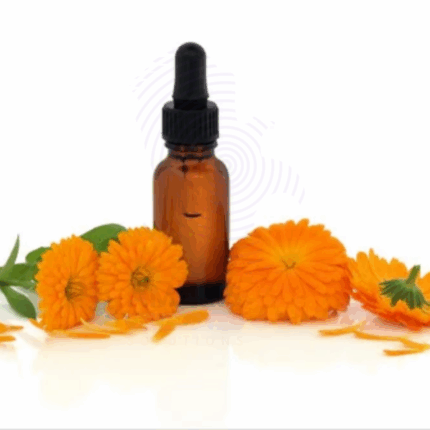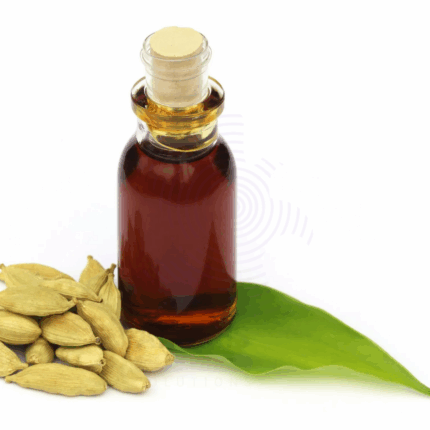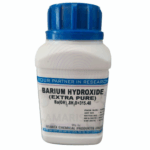

Absinth Oil
Absinth Oil, also known as Wormwood Essential Oil, is a highly aromatic essential oil extracted through steam distillation from the leaves and flowering tops of the Artemisia absinthium plant. Native to Europe and Asia and known historically for its use in absinthe liqueur, this oil features a sharp, bitter, herbaceous aroma with a green and slightly medicinal edge. Rich in thujone, chamazulene, and other bioactive compounds, Absinth Oil is known for its antimicrobial, anti-inflammatory, and digestive-stimulating properties.
While traditionally associated with herbal medicine and ritualistic use, modern applications of Absinth Oil span personal care, pharmaceuticals, and natural pest repellents. Due to its intensity and potential toxicity in high concentrations, it is used in very controlled amounts in fragrance and therapeutic blends. It is valued for its distinctive scent and potent botanical properties, particularly in cosmetics, aromatherapy, and natural cleaning formulations.
Absinth Oil
Primary Uses
- Cosmetics and Personal Care
- Added in trace amounts to perfumes and colognes for its deep, green, bitter-herbaceous notes.
- Used in skin-toning creams and astringent lotions for its purifying effects (in highly diluted concentrations).
- Incorporated into massage oils and topical balms for its warming and circulation-stimulating effects.
- Used in shampoos and scalp formulations to promote scalp hygiene and manage oiliness (carefully dosed).
- Featured in men’s grooming products such as aftershaves, beard balms, and deodorants for its herbal depth.
- Aromatherapy & Wellness
- Used with caution in blends aimed at stimulating alertness and mental clarity.
- Incorporated into diffuser blends for its grounding and protective aromatherapeutic qualities.
- Occasionally included in folk medicine-inspired formulations for digestive and tonic effects (non-ingestible grade).
- Employed in energy-clearing or ritualistic oil blends for spiritual and mood-resetting purposes.
- Pharmaceuticals
- Historically used in digestive bitters and herbal tonics (in highly controlled and regulated quantities).
- Employed in topical preparations for minor muscle pain relief and skin irritation (under medical supervision).
- Investigated for antimicrobial applications in herbal pharmacopoeia.
Secondary Uses
- Cleaning and Detergent Products
- Incorporated in natural cleaning sprays and disinfectants for its strong antimicrobial and insect-repelling properties.
- Used in green household formulations for its powerful deodorizing and sanitizing qualities.
- Added to botanical room sprays to cleanse air and surfaces naturally.
- Fragrance and Ambient Scenting
- Used in niche perfumery as a unique green, bitter middle note for aromatic complexity.
- Added to scented candles and incense sticks to evoke herbal, medicinal, or ancient ceremonial themes.
- Blended into essential oil diffusers for a pungent, earthy backdrop to spiritual or meditative spaces.
- Pest Control
- Used as a botanical insect repellent in natural bug sprays and anti-moth sachets.
- Incorporated into pet-safe outdoor formulations to deter insects in garden or stable environments.
- Traditional and Herbal Craft
- Sometimes included in herbal blends and ceremonial oil infusions (non-ingestible, aromatic only).
- Used by herbalists for creating tinctures and topical salves (under strict regulation and safety standards).
| PACK SIZE |
5kg |
|---|
1. Basic Identification Attributes
- Botanical Name: Artemisia absinthium
- Common/Trade Name: Absinth Oil / Wormwood Oil
- INCI Name: Artemisia Absinthium Oil
- CAS Number: 8008-93-3
- HS Code: 3301.29
- Synonyms: Wormwood Essential Oil, Artemisia Oil, Green Fairy Oil
2. Physical & Chemical Properties
- Physical State: Liquid essential oil
- Color & Odor: Pale green to yellow; bitter, herbaceous, camphoraceous scent
- Solubility: Insoluble in water; soluble in alcohol and fixed oils
- Refractive Index: 1.460 – 1.490
- Specific Gravity: 0.890 – 0.950
- Main Components: Thujone, camphor, sabinene, chamazulene, myrcene
3. Safety & Hazard Attributes
- GHS Classification: Flammable liquid; toxic if ingested; harmful if inhaled or absorbed through skin in concentrated form
- Toxicity: Contains thujone — neurotoxic in large quantities; for external use only
- Exposure Limits: Should be used in concentrations below regulatory thresholds (0.4% in cosmetics recommended)
- Allergen Information: Contains potential allergens such as thujone, camphor, and pinene derivatives
4. Storage & Handling Attributes
- Storage Conditions: Store tightly sealed in a cool, dark place away from heat and sunlight
- Container Type: Amber glass or stainless steel to prevent oxidation
- Shelf Life: Up to 24 months under optimal storage conditions
- Handling Precautions: Avoid skin contact and inhalation of concentrated vapor; use in well-ventilated areas
5. Regulatory & Compliance Attributes
- Restricted under IFRA guidelines for certain applications (especially perfumes and rinse-off products)
- Regulated in many countries due to thujone content; not permitted for ingestion unless within very low limits
- Manufactured in GMP-compliant facilities
- Subject to additional safety review in food and pharmaceutical contexts
6. Environmental & Health Impact
- Biodegradability: Biodegradable under standard environmental conditions
- Ecotoxicity: Toxic to aquatic life in concentrated form; avoid release into waterways
- Bioaccumulation: Not expected to bioaccumulate under normal environmental exposure
Safety Handling Precautions
- PPE Required: Gloves, goggles, and respiratory protection if handling large quantities
- Handling Guidelines: Use under expert supervision; never use undiluted on skin
First Aid Measures
- Inhalation: Remove person to fresh air and monitor for symptoms; seek medical attention if needed
- Skin Contact: Wash with soap and water; discontinue use if irritation occurs
- Eye Contact: Flush with water for at least 15 minutes; seek medical care
- Ingestion: Do not induce vomiting; seek emergency medical assistance immediately
Firefighting Measures
- Fire Hazards: Flammable liquid; keep away from sparks, flames, and static discharge
- Extinguishing Media: Dry chemical, foam, CO₂, or water spray
- Special Precautions: Firefighters should wear self-contained breathing apparatus
- Hazardous Combustion Products: Carbon oxides, herbal vapors, potential irritants


 Preservatives(food)
Preservatives(food) Flavor Enhancers
Flavor Enhancers Acidulants
Acidulants Sweeteners
Sweeteners Antioxidants
Antioxidants Colorants(food)
Colorants(food) Nutraceutical Ingredients (food)
Nutraceutical Ingredients (food) Nutrient Supplements
Nutrient Supplements Emulsifiers
Emulsifiers
 Collectors
Collectors Dust Suppressants
Dust Suppressants Explosives and Blasting Agents
Explosives and Blasting Agents Flocculants and Coagulants
Flocculants and Coagulants Frothers
Frothers Leaching Agents
Leaching Agents pH Modifiers
pH Modifiers Precious Metal Extraction Agents
Precious Metal Extraction Agents
 Antioxidants(plastic)
Antioxidants(plastic) Colorants (Pigments, Dyes)
Colorants (Pigments, Dyes) Fillers and Reinforcements
Fillers and Reinforcements Flame Retardants
Flame Retardants Monomers
Monomers Plasticizers
Plasticizers Polymerization Initiators
Polymerization Initiators Stabilizers (UV, Heat)
Stabilizers (UV, Heat)
 Antifoaming Agents
Antifoaming Agents Chelating Agents
Chelating Agents Coagulants and Flocculants
Coagulants and Flocculants Corrosion Inhibitors
Corrosion Inhibitors Disinfectants and Biocides
Disinfectants and Biocides Oxidizing Agents
Oxidizing Agents pH Adjusters
pH Adjusters Scale Inhibitors( water)
Scale Inhibitors( water)
 Antioxidants(cosmetic)
Antioxidants(cosmetic) Emollients
Emollients Fragrances and Essential Oils
Fragrances and Essential Oils Humectants
Humectants Preservatives
Preservatives Surfactants(cosmetic)
Surfactants(cosmetic) Thickeners
Thickeners UV Filters
UV Filters
 Fertilizers
Fertilizers Soil Conditioners
Soil Conditioners Plant Growth Regulators
Plant Growth Regulators Animal Feed Additives
Animal Feed Additives Biostimulants
Biostimulants Pesticides (Herbicides, Insecticides, Fungicides)
Pesticides (Herbicides, Insecticides, Fungicides)
 Active Pharmaceutical Ingredients (APIs)
Active Pharmaceutical Ingredients (APIs) Excipients
Excipients Solvents(pharmaceutical)
Solvents(pharmaceutical) Antibiotics
Antibiotics Antiseptics and Disinfectants
Antiseptics and Disinfectants Vaccine Adjuvants
Vaccine Adjuvants Nutraceutical Ingredients (pharmaceutical)
Nutraceutical Ingredients (pharmaceutical) Analgesics & Antipyretics
Analgesics & Antipyretics
 Analytical Reagents
Analytical Reagents Solvents(lab)
Solvents(lab) Chromatography Chemicals
Chromatography Chemicals Spectroscopy Reagents
Spectroscopy Reagents microbiology-and-cell-culture-reagents
microbiology-and-cell-culture-reagents Molecular Biology Reagents
Molecular Biology Reagents Biochemical Reagents
Biochemical Reagents Inorganic and Organic Standards
Inorganic and Organic Standards Laboratory Safety Chemicals
Laboratory Safety Chemicals Specialty Laboratory Chemicals(Special Laboratory Equipment)
Specialty Laboratory Chemicals(Special Laboratory Equipment)
 Demulsifiers
Demulsifiers Hydraulic Fracturing Fluids
Hydraulic Fracturing Fluids Scale Inhibitors(oil)
Scale Inhibitors(oil) Surfactants(oil)
Surfactants(oil) Drilling Fluids
Drilling Fluids
 Dyes and Pigments
Dyes and Pigments Bleaching Agents
Bleaching Agents Softening Agents
Softening Agents Finishing Agents
Finishing Agents Antistatic Agents
Antistatic Agents
 Admixtures
Admixtures Waterproofing Agents
Waterproofing Agents Sealants and Adhesives
Sealants and Adhesives Curing Compounds
Curing Compounds Concrete Repair Chemicals
Concrete Repair Chemicals Anti-Corrosion Coatings
Anti-Corrosion Coatings
 Surfactants(cleaning)
Surfactants(cleaning) Builders
Builders Enzymes
Enzymes Solvents (Cleaning)
Solvents (Cleaning) Fragrances
Fragrances
 Electronic Chemicals
Electronic Chemicals Catalysts
Catalysts Lubricants
Lubricants Photographic Chemicals
Photographic Chemicals Refrigerants
Refrigerants Automotive chemicals
Automotive chemicals Pyrotechnic Chemicals
Pyrotechnic Chemicals
 Biodegradable Surfactants
Biodegradable Surfactants Bio-based Solvents
Bio-based Solvents Renewable Polymers
Renewable Polymers Carbon Capture Chemicals
Carbon Capture Chemicals Wastewater Treatment Chemicals
Wastewater Treatment Chemicals
 Pigments
Pigments Solvents(paint)
Solvents(paint) Specialty Coatings
Specialty Coatings Binders/Resins
Binders/Resins Additives
Additives Driers
Driers Anti-Corrosion Agents
Anti-Corrosion Agents Functional Coatings
Functional Coatings Application-Specific Coatings
Application-Specific Coatings
 Fresh Herbs
Fresh Herbs Ground Spices
Ground Spices Whole Spices
Whole Spices Spice Blends
Spice Blends Dried Herbs
Dried Herbs
 Leavening Agents
Leavening Agents Dough Conditioners
Dough Conditioners Flour Treatments
Flour Treatments Fat Replacers
Fat Replacers Decoratives
Decoratives Preservatives(baking)
Preservatives(baking)
 Plasticizers & Softeners
Plasticizers & Softeners Reinforcing Agents
Reinforcing Agents Adhesion Promoters
Adhesion Promoters Vulcanizing Agents
Vulcanizing Agents Antidegradants
Antidegradants Blowing Agents
Blowing Agents Fillers & Extenders
Fillers & Extenders Accelerators & Retarders
Accelerators & Retarders

